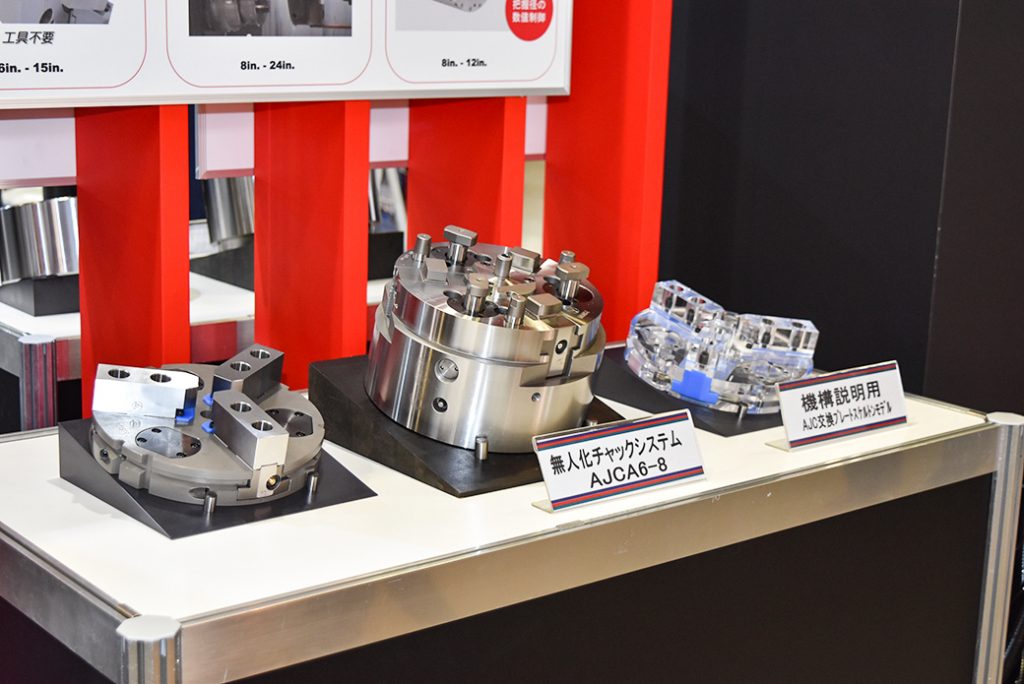
- News
- Basics
- Products
- JP Job shop
- Exhibition
- Interview
- Statistic
- PR
- Download
- Special contents
News
July 25, 2018

Matsumoto machine sells chuck and rotary tables. The company focuses on allowing organizations to increase sales by reducing labor associated with replacing jaws from chucks. Matsumoto machine recently built a factory showroom, in order to effectively hold seminars and promote their products, around these solutions. Their products areincreasingly attracting more and more attention, as the growing need for automation of high-mix and low volume production increases.
How do they achieve this?
Matsumoto offers three key products aimed at reducing the labour associated with replacing jaws in turning: (1) Auto Jaw Change (AJC) chuck, (2) Quick Jaw Change (QJC) chuck, and (3) Electric chuck.
Normally, in turning, it is necessary to change the jaws used for gripping the work piece. Although high-mix and low volume production is becoming mainstream in a wide range of industries, frequent jaw exchanges are required, which take up a lot of time and labor. The many setup changes required, along with a serious shortage in manpower, make this production style difficult to implement.
Matsumoto Machine’s products are attracting attention because they meet the needs of high-mix and low-volume production, while utilizing automation to make setup easier.
AJC chuck consists of a jaw-mounted plate and a base chuck. It can replace all jaws at the same time by simply replacing the plates. The plates can then harness various work
pieces, including robots, which make production smoother. The process makes it possible to achieve unmanned operations for extended periods of time.
QJC chuck can also easily change jaws. It works by simply turning the knob without using a wrench, thereby reducing setup time. QJC chuck in particular, has seen an increase
in sales inquiries for the company as of late, particularly amongst airlines, according to Masanobu Kuwamoto, Sales Division Director at Matsumoto Machine.
In recent years, Matsumoto Machine has also focused on proposals for “ROBO QJC,” which automates jaw replacement by turning knobs with robots equipped with specialized
hands. Mr. Kuwamoto commented, “We will propose automated systems to completely automate the chuck, including the production and teaching of robotic hands.”
January 7, 2026
December 9, 2025